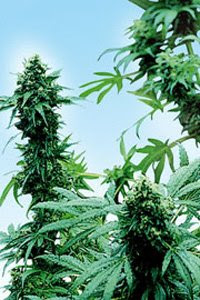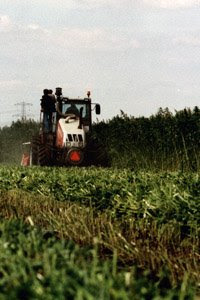Perhaps the most interesting fact about industrial hemp, especially when compared to trees or to other fibre crops, is its amazing versatility.
Cannabis as a food source.
Cannabis can provide a cheap, renewable and abundant food source for the planet. Hemp seeds are one of the most nutritious grains on Earth, rich in high quality protein, very low in saturated fats and containing all of the essential fatty acids required by human beings.
Cannabis grows almost anywhere and its cultivation does not require farmers in developing countries to purchase pesticides, herbicides and artificial fertilisers from agricultural corporations.
Cannabis as a medicine.
The medicinal value of cannabis is widely accepted by medical professionals all over the world. It is interesting to note that opposition to the therapeutic benefits of cannabis comes almost exclusively from law-making groups rather than those with expertise in medicine or pharmacology.
The best-known medical applications of cannabis are in treating pain, asthma, glaucoma, muscle spasm and epilepsy. Cannabis is also extremely useful in combating the nausea, loss of appetite and general discomfort associated with the synthetic drugs used in chemotherapy and HIV treatment.
The various cannabinoids produced by cannabis have numerous other medical applications and more are discovered every year as legal obstacles to cannabis research are slowly overcome.
Cannabis textiles.
Industrial hemp remains one of the best sources for long fibres and textiles of all kinds. Hemp cloth can be every bit as soft and versatile as cotton and is stronger, more durable and more water absorbent.
The same is true of hemp textiles versus synthetics such as nylon and its derivatives. Hemp textiles are both superior in quality and less ecologically damaging to produce.
Furthermore, Hemp cultivation does not degrade the land upon which it is practiced as cotton cultivation does. Hemp cultivation, properly practiced, maintains or improves the quality of the land. Industrial cotton production requires enormous amounts of chemicals to grow and process the crop.
Cannabis paper.
Hemp pulp is by far the most efficient, rational choice for paper production. A hectare of fibre hemp can yield over four times the pulp produced by traditional timber-pulp trees. Hemp can also compete with any of the faster growing trees (such as eucalypts) that are currently being considered as a source for pulp.
Processing hemp pulp requires only a fraction of the chemicals necessary to process wood fibre into paper. Where they are required, the chemicals used in hemp papermaking are far less pollutive than those used to make paper from trees
On its own, pulp from hurds may be turned into high-quality paper. With the addition of long hemp fibres, the highest quality of paper is produced. This paper is still used for banknotes, official documents and in other situations where paper from tree pulp is simply not strong or durable enough.
A hectare of industrial hemp can easily compete with a hectare of trees for pulp production. In addition, that same hectare can simultaneously produce a large amount of high quality long fibres with numerous industrial applications.
Hemp as a bio fuel.
Hemp is a viable, renewable alternative to petrochemical and other fossil resources. It can supply oils for fuel or lubrication, plastics, paints and varnishes. It is also the most productive and efficient known source of biomass.
The term ‘biomass’ is used to describe all biologically produced matter. Burning biomass to produce energy or processing it into ‘bio-fuels’ such as methane and methanol is seen by many as the best alternative for future fuel sources. Turning biomass into various forms of energy is far cleaner than any fossil equivalent and may be practiced anywhere that biological matter is produced. Hemp, with its speed of growth and ability to flourish almost anywhere is perhaps the only plant that can fulfill the vision of a world run on bio-energy.
All the characteristics mentioned above make the cannabis plant unique in its versatility, productivity and eco-friendliness. All byproducts have useful applications; all stages of growing and processing have either a low impact or a decidedly beneficial effect upon the environment.
Why is it that our society is not using this environmentally friendly, versatile and abundant resource? What interest are at stake?


